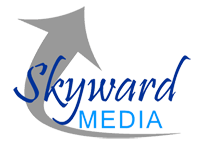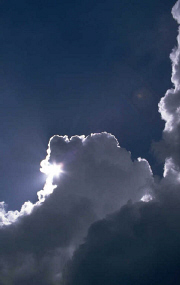|
|
|||||
|
The Video Process |
|||||
|
There's a definite "flow" of activity involved in creating a video production, and it's more complicated than most laypeople suspect. Here's a very basic overview of how we accomplish a typical, large corporate project: 1. Initial consulting: We meet with you, and we learn what the video must accomplish. We ask questions. (Are you selling a product or service? Are you trying to convince someone to do something? Are you trying to move people emotionally? What's the video's purpose and intent?) We take lots of notes. We make suggestions. We listen. 2. Outline/Scripting: Nothing happens in a pre-produced video without a script. In this phase, we compile a list of proposed scenes, write an initial outline of the project and a sample actor's script, write a narration script (if required), and develop the general structure of the video. We get your approval of this initial draft. 3. Next, we develop a "shooting script," from which the project will operate during the Production phase. Specific scenes are scripted and planned. Locations are scouted. On-camera "talent" is recruited. Lighting and audio plans are developed. Camera movements are planned. We acquire any special equipment we'll need. You receive a copy of the script for your approval. We schedule the "shoot." 4. Our production team travels to the shooting location(s) and sets up their gear. Shooting begins, using high-end digital video cameras, lighting gear, audio equipment, and other specialized tools of the trade. It's a busy, exciting time. This is the activity most people think of when they hear the term "making a video," although it's usually the shortest phase of any production. 5. The resulting digital footage is "logged." Every second of footage is reviewed and graded, and detailed notes are taken about each "take," including its lighting and audio quality, digital time-code, continuity notes, and more. 6. Relevant and good-quality shots are transferred to a digital editing system. Each file is named, indexed and organized. 7. A very rough edit of the project is assembled, using a digital "storyboard." Clips are organized in the approximate order they'll be used. We acquire any still photos and graphics that will be used in the project, and we digitize them for use in our editing systems. 8. A voiceover narration track, if used in your project, is recorded. The resulting audio files are transferred to an audio processing computer, digitally improved and mixed, then sent to the video editing system. This narration track is added to the project for reference purposes. 9. A tentative music soundtrack is chosen and added to the project. 10. The serious editing begins. This is where the program is truly crafted from the raw materials that we've previously gathered, and where technology meets artistry. Scenes are trimmed, fitted, and massaged to tell the story. Audio elements are sequenced and adjusted to add the right "punch" to the visual message being conveyed. Scene lengths are adjusted. Transitions are rendered. Special effects are added. We drink a lot of coffee and work late into the night. 11. If required, we create a rough-cut of the project for your examination. At this point, we can make changes in content, story "flow," music, narration, and other areas. 12. Once you are satisfied with the "proof" video, we go back to the computers to finalize the project. Often, this involves small tweaks of the editing, audio levels, scene transitions or color balance. While these changes are usually small, they are often what elevates the quality of our productions from those of many other companies. 13. Finally, we add any required text overlays, titles, and additional special effects. We adjust music tracks and other sound effects. 14. We hold an in-house "screening party," where we sit back and evaluate the project, looking for anything upon which we might be able to improve. When we're happy (and when we know you will be, too), we finalize the project. 15. We create master files of the program, from which all the subsequent copies will be made. We can create as many copies of the program as you require. 16. If required, we'll create professional packaging for your video, including a case/box design, labels, and mailers. We can also created custom DVD menus. 17. We distribute the video. We can arrange bulk shipments of the finished product to multiple destinations, if required. You receive the master copy, and all rights to distribute it further. 18. We conduct a follow-up survey to make sure you're satisfied with the finished program, and to analyze how effectively it met your goals. * * * * *
As you can see, there's a lot more to
creating a professional video production than simply pointing a camera at
the action and hoping for the best. We hope this glimpse into our process
has explained why it's important to hire professionals for your next video
project. |
|||||
|
|||||
|
Site Menu: Home | About Us | Clients Catalog/Purchase Videos | Projects The Video Process | Aerial Photography Demo Reel | Contact Us |
|||||
|
Copyright 2014 Skyward Media |
|||||


